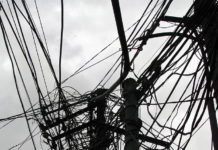by Debra Fiakas CFA
Last week President Obama signed into law the Energy Efficiency Improvement Act of 2015. The law is intended to reduce energy requirements in commercial buildings, manufacturing facilities and residential structures. The law improves building codes, provides assistance to manufactures to achieve energy efficiency and paves the way for conservation activities by federal agencies. It is the closest thing the United States has to an energy policy…..so far.
It took years to get this small piece of energy policy through Congress. Indeed, at one point in its convoluted travels through the House of Representatives and Senate, several of the bill’s Republican sponsors actually filibustered against it. First, there was some sort of crazed attempt to protect the Keystone XL pipeline. Then, additional delays resulted from attempts to add amendments that would enable exports of natural gas and others that would have reduced the U.S. Environmental Protection Agency authority to regulate future power plants.
The legislation was widely supported by the utility industry. Both the Natural Resources Defense Council and the U.S. Chamber of Commerce were early advocates. Such support bodes well for the success of the legislation.
Part of the reason the bill was well received is the voluntary and market-driven character. Title I of the law providers for voluntary approach to reducing energy use in commercial buildings. Title III of the act requires federally-leased building without Energy Star labels to benchmark and disclose energy usage data.
Senators Portman and Shaheen, who had sponsored the Energy Efficiency bill have also put forth the Energy Savings and Industrial Competitiveness Act. It was sent to a congressional committee in early March 2015. It would establish a national strategy for energy efficiency with a model building code. It would also promote energy-efficient supply chains for companies with the federal government agencies leading the way and support energy efficiency in schools. The legislation is projected to create 192,000 jobs and save $16 billion annually in energy use as well as reduce carbon dioxide emissions by 95 million tons within the next fifteen years.
For investors the legislation may not seem important. However, an unexpected consequence of this law might be in creating a standards-based approach to energy efficiency. With all business aiming at the same target, it creates some production and marketing efficiencies. I expect more innovators to be encouraged to invest in products and processes that might otherwise have been thought uneconomic. Interestingly, the legislation does not rely on penalties or punishments. It simply promotes market forces and competition. I also expect this to lubricate interest in bringing efficiency products to the market.
Debra Fiakas is the Managing Director of Crystal Equity Research, an alternative research resource on small capitalization companies in selected industries.
Neither the author of the Small Cap Strategist web log, Crystal Equity Research nor its affiliates have a beneficial interest in the companies mentioned herein.








